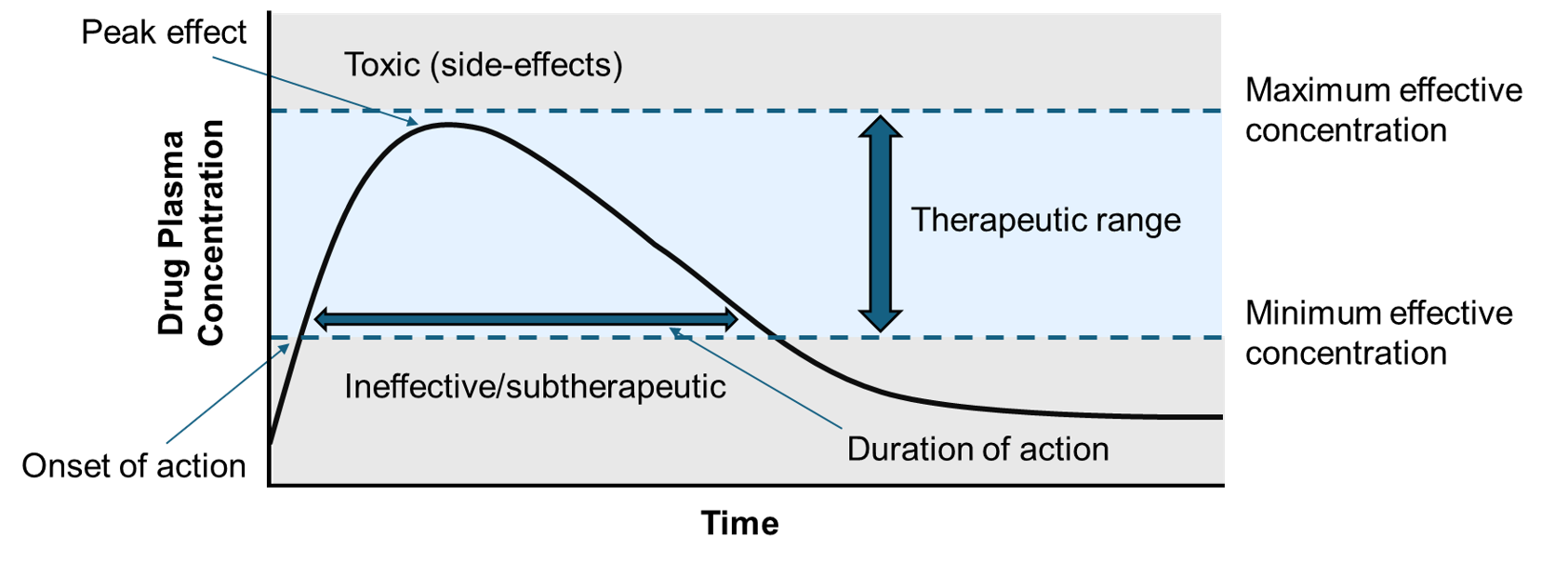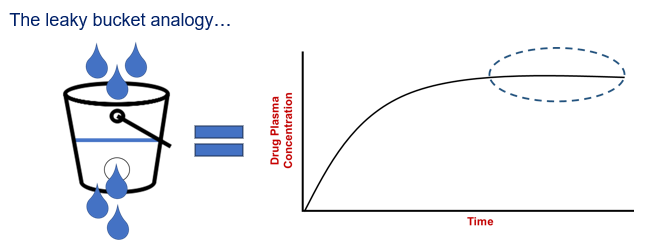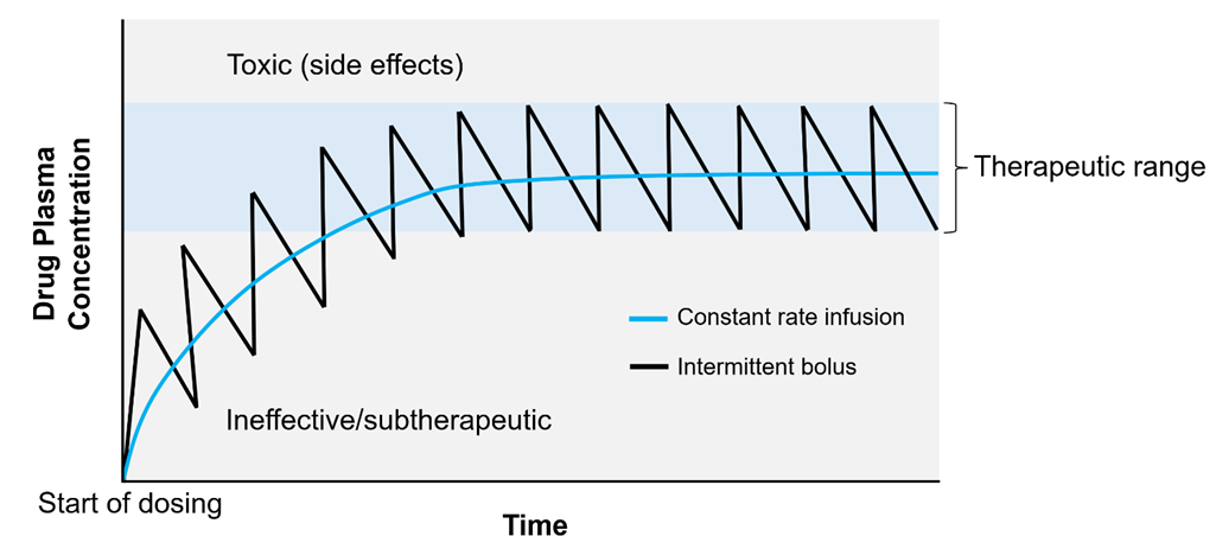Pharmacokinetics and Pharmacodynamics - Intro
1/23
Earn XP
Description and Tags
Terminology
Name | Mastery | Learn | Test | Matching | Spaced |
|---|
No study sessions yet.
24 Terms
Pharmacology
The scientific study of chemicals (drugs) and their effects on living organisms
Pharmacokinetics
How the body acts on a drug when administered and how it moves through the body (absorption, distribution, metabolism, excretion)
Pharmacodynamics
How a drug acts on the body after administration to exert its effects
Prefix ‘pharma’
Relating to pharmaceuticals or pharmacology
Suffix ‘kinetics’
Motion or movement
Suffix ‘dynamic’
Continuous and productive activity or change
Therapeutic
Having a positive effect relating to the treatment of disease

Therapeutic range
The range of plasma concentrations in which most veterinary patient have the desired drug effect with minimal toxicity
Therapeutic Index
A quantitative measure of the relationship between drug safety and efficacy
The therapeutic Index uses a ratio that compares …
The drug concentration that elicits toxicity in 50% of the population (TD50) to the concentration that elicits a therapeutic in 50% of the population (ED50)
Wide/large therapeutic index
Difference between the two concentrations in large = safter/less chance of toxicity
Narrow/small therapeutic index
Difference between the two concentrations in small = may be harmful if dosing is not accurate due to higher chance of toxicity
Half-life
The amount of time is takes for the concentration of a medicine administered to be reduced by half
Will be different in different species due to how they metabolise and excrete the drug
Individual patient factors may also influence the half life in that patient
An animal with reduced liver or kidney function may clear a drug more slowly, leading to a ..
Prolonged half-life compared to that stated n the product literature
Steady State concentration is dependant on ..
The elimination half-life of the drug
The steady state concentration
An equilibrium in which drug concentrations consistently stay within the therapeutic limits
Steady state concentration occurs when ..
The amount of a drug is being absorbed by the body
Repeated dosing
Dosing at separate intervals e.g. giving a tablet three times a day/every 8 hours as prescribed by a veterinary surgeon
Continuous dosing
An intravenous infusion/constant dosing e.g. adding glucose to a patient’s intravenous fluid bag

Steady state concentration - The leaky bucket analogy
The same amount of a drug is being absorbed by the body is the same amount they is being cleared from the body → concentration remains stable or consistent when the drug is administered repeatedly or continuously

The rate at which a drug reaches SSC depends on its half-life (time taken for the body to eliminate half of the drug) typically stated as 5 half-lives (t1/2). During this time, the drug concentration ..
Gradually increases until it reaches a plateau where the administration and elimination rates become equal

Half-life often defines the redosing interval. For drugs with a half-life between 8-24 hours this leads to dosing between 1 and 3 times daily. Shorter intervals than this are often not practical. Medicines with a half-life shorter than 8 hours will often be given in bigger doses to allow for extended intervals. This is only possible if the medicine has ..
A wide therapeutic index
If a drug has a half-life of 8 hours, how long will it take to reach SSC?
Half-life = 8 hours, steady state typically takes 5 half-lives. Therefore, time to SSC 5×8 = 40hours
If a drug has a half-life of 24 hours, how often should it be administered?
Half-life = 24 hours, dosing likely to be once per day